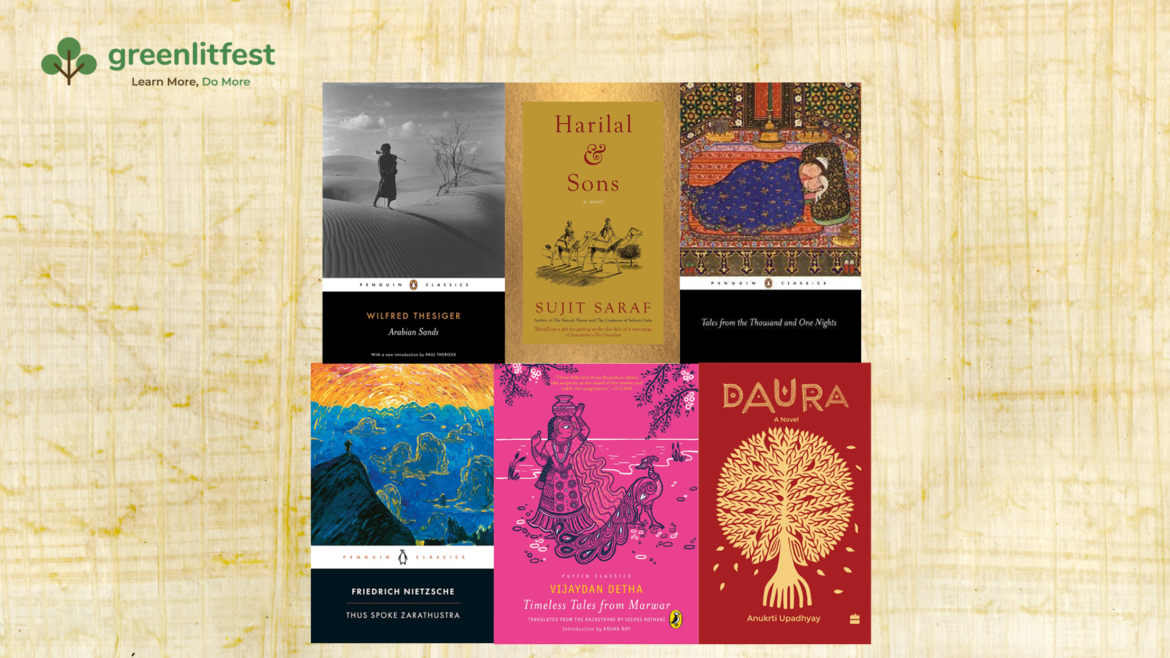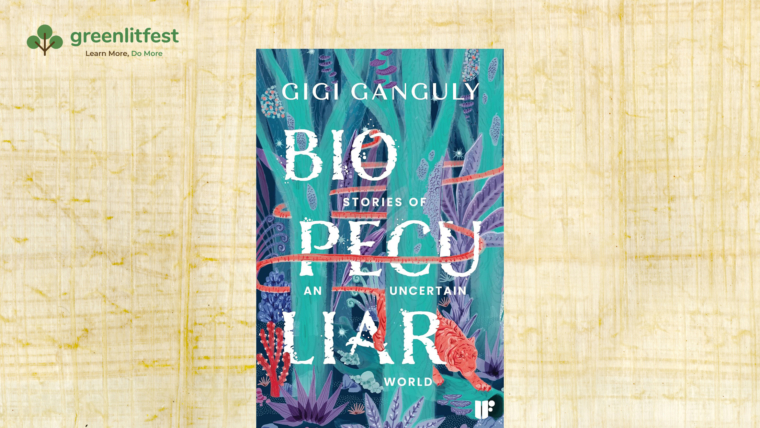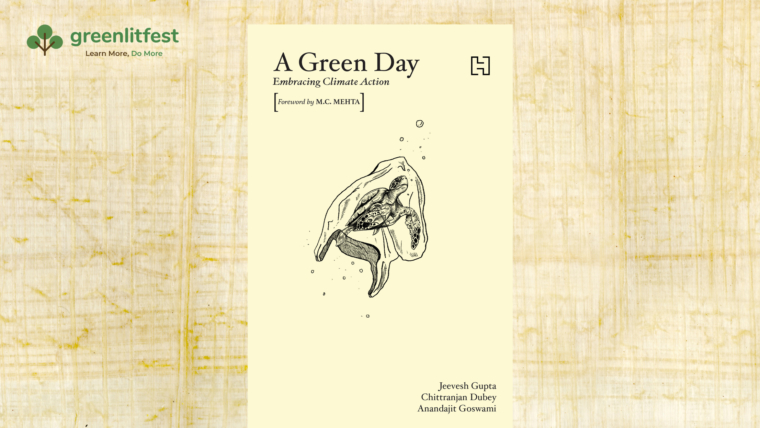With inputs from Meghaa Gupta
We do not have prose praising the deserts as Thoreau praised the woods or Hemingway the sea, nor do we find an Ode to the Sand by Wordsworth, Keats or Shelley. Yet in a way we do… ~ Rune Graulund
There is no clear way to define a desert. What is construed as a barren wasteland by some is brimming wilderness, an ecosystem full of life to others. Like the endless possibilities a blank canvas offers an artist, writers have harnessed this versatility of the desert landscape in narratives that document its fascinating hues.
Folktales, Myths and Legends
Among the greatest Middle Eastern contributions to world literature, One Thousand and One Nights is a timeless collection of mystical, mythical and magical desert folktales from Arabia. Populated by jinns, ghouls and unforgettable characters like Aladdin and Ali Baba, these much-loved stories connect every reader to the desert. Indeed, folktales, myths and legends are a popular influence in literature on the desert.
A stalwart of Rajasthani literature, Vijayan Detha spent decades documenting folklore from the desert state. Many of his stories have been translated into English by Vishes Kothari and are available in two fine collections – A Garden of Tales: The Best of Vijaydan Detha and Timeless Tales from Marwar. They offer a reliable and riveting record of the complex and quirky world of the common folk of Rajasthan.
Trudging the fine line between fable and reality, mysticism and the absolute truth, Bhaunri and Daura by Anukrti Upadhyay are haunting novels that capture the life of desert communities in India. While the former tells a story of the dark and fearsome love of a woman belonging to a tribe of nomadic blacksmiths, the latter is a compelling narrative of a young district collector, in one of the furthest outposts of rural Rajasthan, who gets entangled in the lives and troubles of common people and slowly slides away from reality. Fantastical and mystical elements also abound in Tasha Suri’s arresting debut novel, Empire of Sand, where the protagonist finds herself trapped between a father who belongs to the ruling classes of the Mughal empire and a mother who comes from a tribe of Amrithi nomads, who worship the spirits of the sands.
Though desert communities are rooted in oral traditions, rich in rhyme, rhythm and alliterations, poems available in English remain far and few. Poems of Rajasthan by Supriya Saxena is a relatively rare collection of desert poetry that captures the landscape and its richnesson either side of the Rajasthan border.
Metaphorical Musings
Jacques Derrida, the renowned deconstruction philosopher, calls the desert “one of the most beautiful and difficult metaphors.” The Waste Land by T.S. Eliot and Seven Pillars of Wisdom by T.E. Lawrence deploy the topography of the desert as a metaphor for mankind’s pursual of alternate realities and meaning in the devastating aftermath of the First World War.
In philosophical texts like Thus Spoke Zarathustra by Friedrich Nietzsche, the ambiguity of ‘living’ and ‘drying’ in the desert landscapes is used to draw conclusions on the nature of memory and the essence of life.
German philosopher Friedrich Hölderlin’s epistolatory novel, Hyperion, or the Hermit in Greece uses the infinitude of deserts to explore human cognition and memory, as the narrator recounts his attempts to help overthrow Turkish rule in Greece. He becomes disenchanted by the rebellion, survives a deadly sea battle and is devastated when his lover dies of a broken heart.
Literary Fiction
Though relatively limited, literary fiction has also explored deserts beyond the poetics of dust and sand, dwelling on the metaphorical duality of the landscape.
Goat Days by Benyamin narrates the struggles of an Indian emigrant in Saudi Arabia and his search for refuge. In Sujit Saraf’s Harilal & Sons,a shopkeeper troubled by a famine in the deserts of Shekhavati turns to his young son, Harilal Tibrewal and despairingly declares, ‘This land has nothing to offer us but sand dunes and khejra bushes.’ The novel then goes on to capture Harilal and his family’s epic journey from Shekhavati to Calcutta, Bogra in East Bengal and a village in Bihar in newly independent India. Reflecting on the nomadic existence of desert communities, the sprawling novel draws an analogy to the unsettling quest of desert people that drives their existence.
Oregon-based writer Janet Marie Sola’s The Overnight Palace explores theThar desert through the eyes of an American protagonist seeking romance and transcendence while Walks Away Woman by the acclaimed writer, Ki Longfellowfollows the journey of a disillusioned housewife in Arizona, who walks into the Sonoran Desert to die, only to find it full of unexpected life.
The Legend of Kuldhara by Malathi Ramachandranis a historical novel about an uninhabited village in Rajasthan and the conflict that drove the villagers away from the fertile oasis of their home.
Non-Fiction
There is an abundance of non-fiction for readers interested in exploring the incredible ecological, social, cultural, political and economic life of deserts. Being the largest in India, the Thar is a common subject.
In Thar: the Great Indian Desert,R.C. Sharmaoffers glimpses into the physiography, history and culture of the land, while The History of Thar Desert: Environment, Culture and Society by Manisha Choudhary is a rich, cultural account of the relationship between desert communities and the region they inhabit. Nomadic Narratives: A History of Mobility and Identity in the Great Indian Desert by Tanuja Kothiyalexplores the troubled history of Thar, while David Zurick’s stunning photography brings to life Fantastic State of Ruin: The Painted Towns of Rajasthan – an ode to the ruins and richness of small-town life in the once prosperous Shekhawati, with its painted buildings and opulent temples. Desert Eves: An Indian Paradise by Catherine Clement with photographs by Hans Silvester is a poetic portrayal of the everyday life of desert women – their housekeeping, costumes, work and songs.
Travel writing has long used the landscape in a literal and figurative sense to explore the instability of life and the magic of new experiences rewarded to seekers. Ibn Battuta, the Maghrebi explorer is believed to be the first person to document the experience of walking through a desert in The Rihla.
Renowned for her masterpiece Tracks, which narrates her excruciating journey across the vast Australian deserts, Robyn Davidson documents her travel with the Rebari people of the Thar in the travelogue Desert Places. Similarly, parts of Shivya Nath’s The Shooting Star: A Girl, Her Backpack and The World describe her experience of travelling in the Thar and sleeping under a meteor shower in the company of dunes.
Camels in the Sky: Travels in Arabia by V. Muzafer Ahamed (translated from Malayalam by P.J. Mathew) is acollection of twenty-three essays narrating the writer’s journeys to Saudi Arabia. Along with the authors’ interaction with the Bedouin community, the book deals with environmental, topographical and archaeological aspects of the desert. The Immeasurable World: Journeys in Desert Places by William Atkinsand Arabian Sands by Wilfred Thesigerare other renowned travel chronicles in deserts across the world by celebrated explorers.
From microbes to humans, the seemingly uninhabitable environment of the desert is teeming with life. Deserts: A Very Short Introduction by Nick Middletonis a short narrative covering the rich imagery and complex biodiversity of the landscape. A Desert Bestiary: Folklore, Literature and Ecological Thought from the World’s Dry Places by Gregory McNameeis a collection of essays detailing the forty-three common animals inhabiting the world’s deserts.
Parting Note
“The desert may be barren in many ways, but in stories it is fertile. There is the real tough, gritty life of the farmers, tribals and women, which spawns tales of courage and craft. In the midst of these, revelling in their richness, the literature of the desert has acquired its expression of traditions and rebellion,” says Anukrti Upadhyay.
Despite the richness of the existing narratives, the Thar Desert is still underexplored in English writing in India. As Rune Graulund points out, there is no literary equivalent of a Thoreau, Hemingway, Wordsworth, Keats or Shelley walking through it. Yet, we know that when it comes to writing, there is infinite possibility.
Monisha Raman’s essays and short stories have been published by various magazines in India and internationally. Her work was a part of the anthology Narratives in Domestic Violence published by the International Human Rights Arts Festival.
Meghaa Gupta heads the Children and Youth Programme at the Greenlitfest and curates a certificate programme in nature writing for new writers at Azim Premji University



